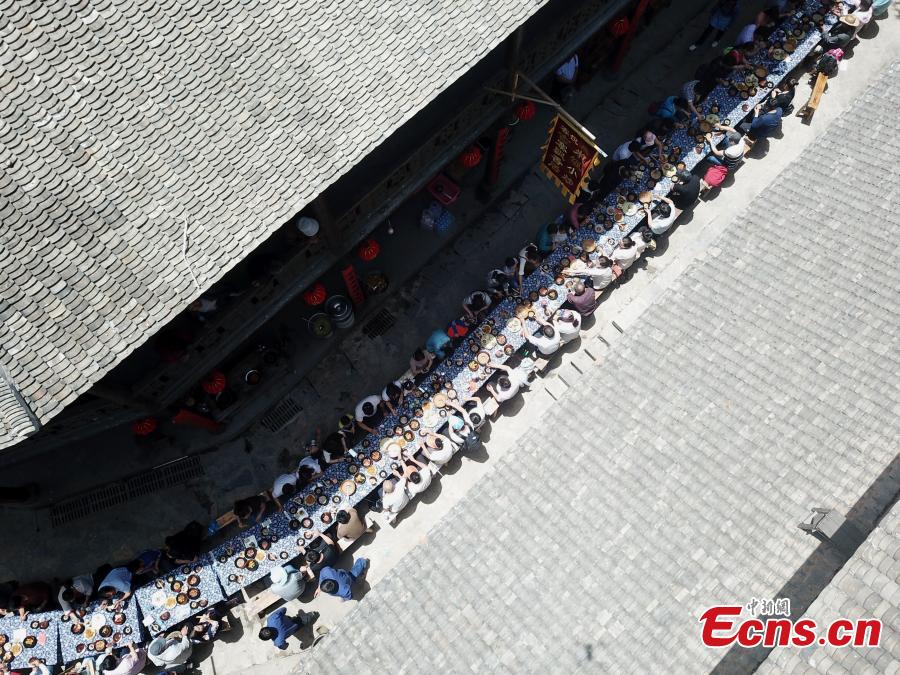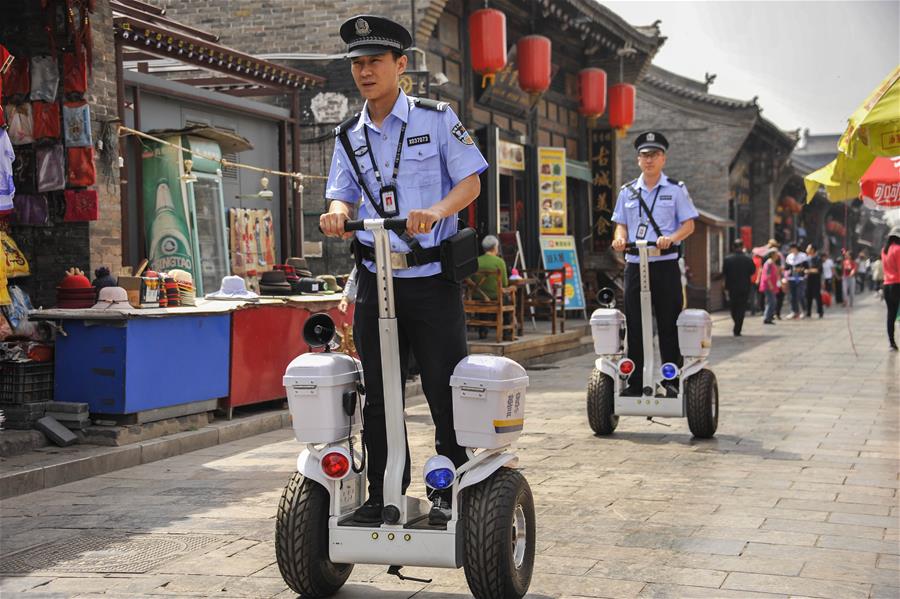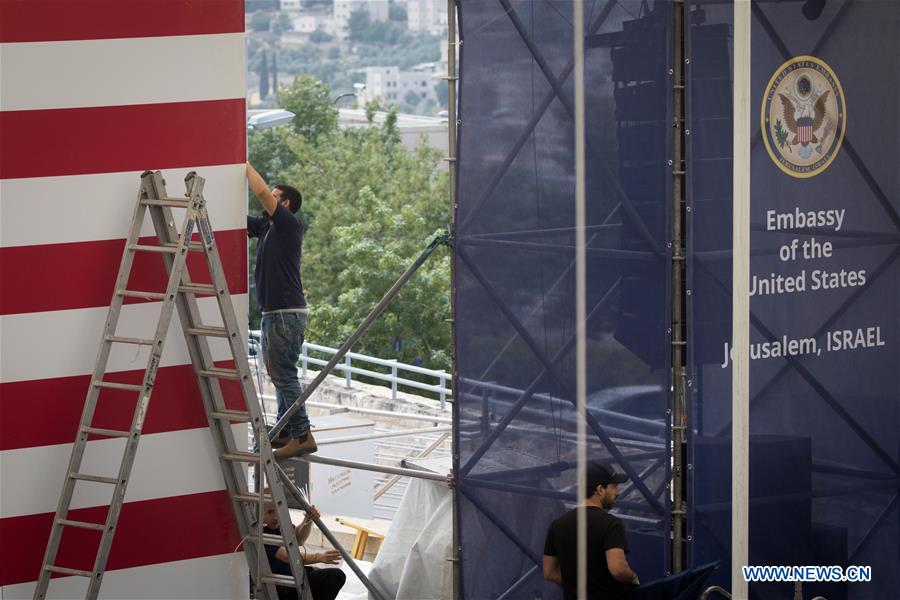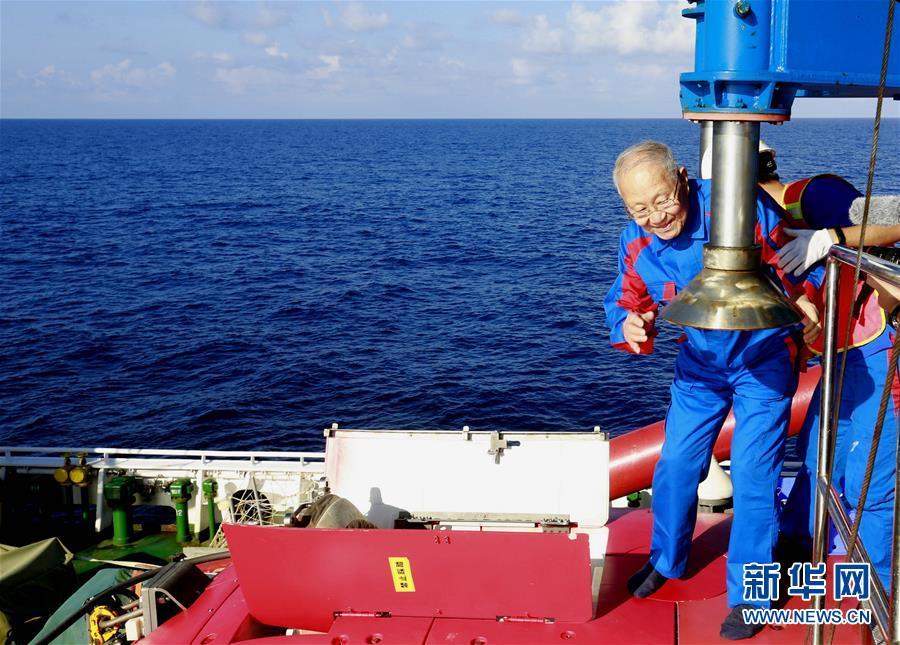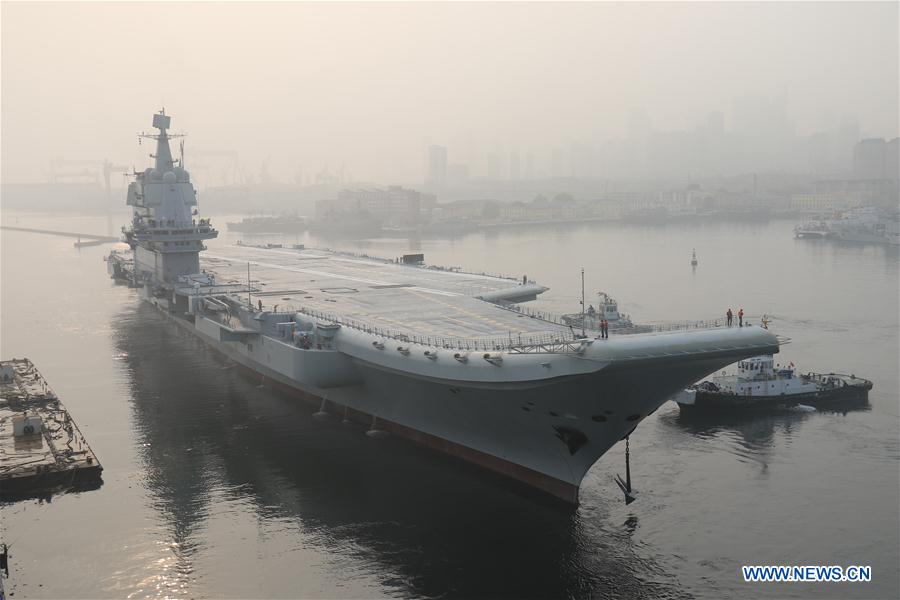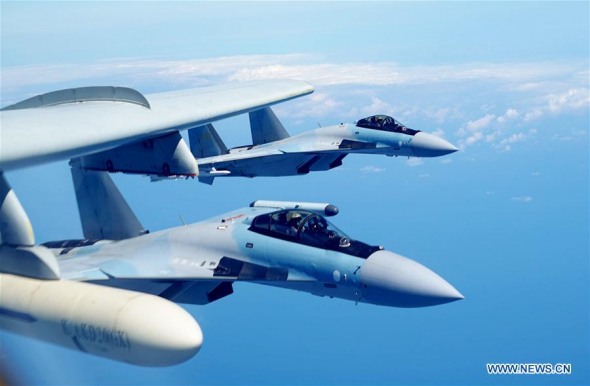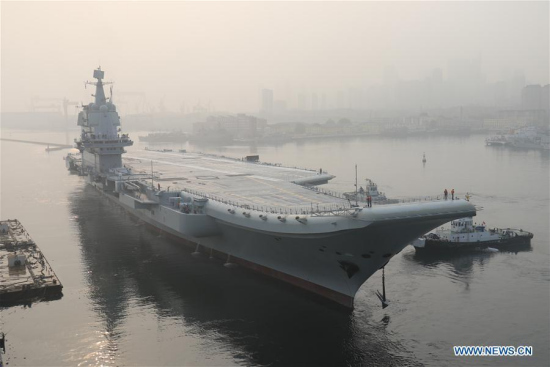
China's first home-built aircraft carrier leaves Dalian in northeast China's Liaoning Province for sea trials on May 13, 2018. (Xinhua/Li Gang)
China's first domestically built aircraft carrier began sea trials on Sunday, the latest step in the country's mission to develop a modern, adaptable naval force. It was a milestone for the Chinese navy and could have long-term effects on the Asia-Pacific region.
"China's efforts to develop aircraft carriers are in line with the interests of the region and it's a key premise of China's national security," Teng Jianqun, director of American Studies Department at China Institute of International Studies, told CGTN.
Teng stressed that having a strong maritime presence has been the priority of China's national strategies since 2012. "A strong navy is the guarantee to achieving the goal," he said.
Aircraft carriers play the headline role in a modern navy, serving as the cornerstone of a fleet.
Dmitry Stefanovich, a fellow at the International Affairs Council in Russia and an independent analyst, agreed with Teng's insights. He said that China will gain a huge advantage in regional affairs from its domestically built aircraft carrier.
"When a country is capable of building aircraft carriers, it is able to defend attacks by air or sea," Stefanovich told CGTN. In his view, China's carriers will help the country secure its island chain. "Geopolitically, China's aircraft carriers will certainly bring great value to maintaining regional peace and defending state sovereignty, particularly in terms of the issues in the South China Sea," Stefanovich said.
Although China's navy has developed rapidly over the past five years, it remains significantly smaller than that of the US. Neither Teng nor Stefanovich believe that China aims to challenge the US ? the world's leading maritime power in the Asia Pacific region ? but rather seeks regional peace and a mutually-beneficial international environment.
"If we look at a world map, we can see the differences between China and the U.S.. The U.S. is actually facing two oceans; China is only facing the West Pacific Ocean. Thus, China's military strategy is different to that of the U.S.," Teng said.
Historically, especially after the Second World War, the U.S. has actively participated in global affairs. The different development patterns of the U.S. and Chinese navies are the embodiment of their different ideologies, Stefanovich argues, adding that the U.S. Navy's battlefield is the whole world because of Washington's eagerness to retain global supremacy. But for China, the ambition is to seek a mutually beneficial Asia.
"Personally I don’t think China will have more than 10 aircraft carriers in the future," Teng said. He indicated that China may build three or four carriers to ensure national security is safeguarded, but stressed that the main purpose of building the vessels is regional peace.









